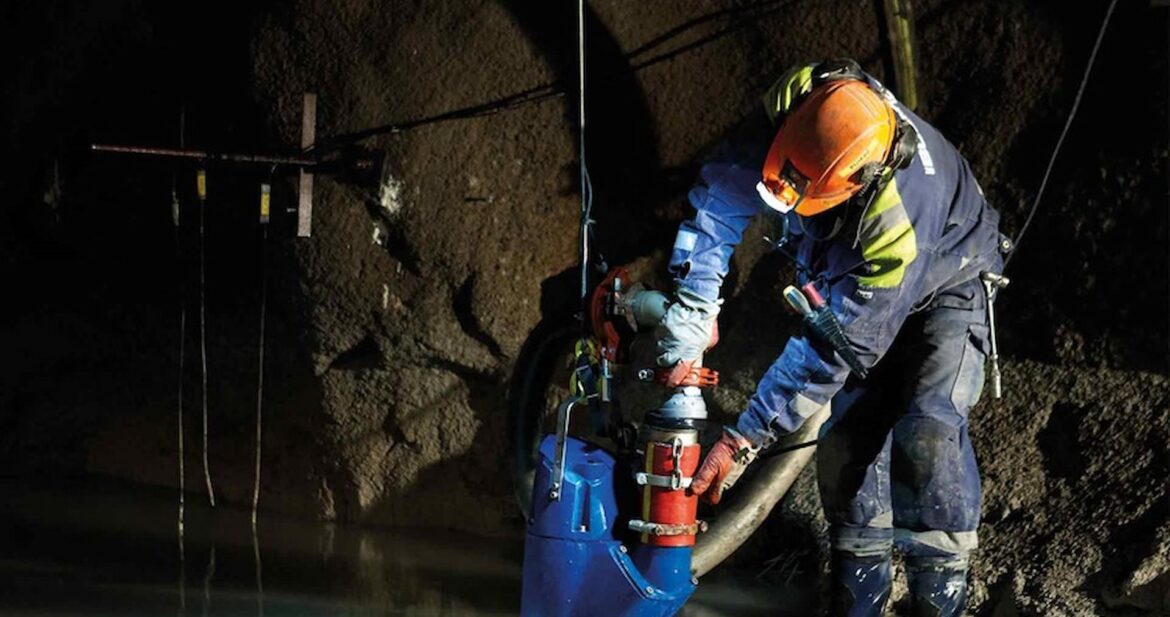Mining operations frequently struggle with the accumulation of deep water, which can halt productivity and damage equipment. This is where cantilever sump pumps come in. These pumps are specially designed to handle the challenges of deep mine dewatering. In this article, we explain their role, how they work, and why they are essential to modern mining. Discover how the right pump can make all the difference in managing underground water effectively and ensuring operations run smoothly.
Mining is one of the most water-intensive industries. Whether it’s an open pit or an underground shaft, water accumulation is a constant challenge. If left unchecked, water can delay operations, increase hazards, and damage expensive equipment. Removing this water efficiently is critical for maintaining safety and productivity.
That’s where the cantilever sump pump plays a key role. Especially in mine dewatering, these pumps are designed to handle deep water levels, high solids content, and continuous operation without failing. Their unique design makes them an essential tool in modern mining environments.
Why Dewatering is Crucial in Mining
Water buildup in mining sites can slow or even stop operations. In underground mines, the problem is even worse. Without proper dewatering, tunnels can flood, causing delays and safety concerns.
- Helps maintain a dry working environment
- Protects expensive equipment from water damage
- Reduces the risk of mine dewatering or instability
- Keeps productivity high and schedules on track
Therefore, efficient dewatering isn’t just useful—it’s essential.
What is a Cantilever Sump Pump?
A cantilever sump pump is a vertical pump used in sumps or pits to remove collected water. Unlike traditional submersible pumps, the motor and bearings remain dry above the fluid level. This design increases durability and simplifies maintenance.
Key design features:
- Vertical shaft with impeller at the lower end
- Motor mounted on a base plate above the liquid
- No submerged bearings or seals
- Resistant to clogging and corrosion
This setup makes the pump ideal for harsh environments like deep mines.
How Cantilever Sump Pumps Work in Mine Dewatering
The process is simple but effective. Water collects in a sump or pit deep underground. The cantilever sump pump is mounted at the surface or a stable platform above the water. Its impeller draws in the water and pushes it up and out through discharge piping.
Here’s why this system works so well:
- The pump operates reliably even in dirty water
- Its motor stays dry and safe from damage
- It handles continuous duty cycles with minimal wear
- It reduces maintenance and replacement costs
Overall, it offers a long-term solution for mine dewatering needs.
Advantages Over Submersible Pumps
While submersible pumps are also used in mining, cantilever sump pumps have unique advantages that make them better suited for deep and dirty environments.
- Dry Motor Placement: The motor isn’t submerged, which reduces the chance of electrical failure.
- Minimal Seal Issues: No submerged seals means fewer breakdowns and leaks.
- Easier Maintenance: Technicians can inspect and repair the motor and bearings without draining the sump.
- Better for Abrasive Solids: They handle debris and sludge more effectively than submersible alternatives.
Applications in Deep Mining Operations
In deep mining, where tunnels may extend hundreds of metres below the surface, dewatering is not just difficult—it’s dangerous without the right equipment. Cantilever sump pumps have proven reliable in several key tasks:
- Dewatering flooded tunnels
- Managing water from drilling and blasting
- Handling slurry with rock and soil particles
- Keeping access roads and shaft bottoms dry
Their rugged design and strong performance make them the go-to choice for engineers working in extreme conditions.
Selecting the Right Cantilever Sump Pump
Choosing the right model depends on several factors. Not all pumps are equal, and selecting the wrong one can result in high repair costs and subpar performance.
Considerations include:
- Depth of the sump: Longer shafts need stronger motors and longer columns
- Solids content: Choose impeller designs that can handle abrasive particles
- Flow rate requirements: Match pump capacity with water inflow rates
- Corrosion resistance: Use coated or stainless-steel pumps in acidic environments
Consulting a pump specialist or supplier can help ensure the right fit for your mine’s specific needs.
Installation and Maintenance Tips
Proper installation and care are crucial to a pump’s long life. Even the best pump will fail early if not handled properly.
Installation Tips:
- Ensure the base plate is secure and level
- Use vibration dampeners if needed
- Keep discharge lines free from blockages
- Install a protective screen to catch large debris
Maintenance Tips:
- Check the motor bearings regularly
- Inspect the impeller for wear or cracks
- Clean the pump casing and shaft monthly
- Replace worn components immediately
Routine inspections go a long way in preventing sudden breakdowns and costly repairs.
The Future of Mine Dewatering Technology
As mining operations move deeper and into harsher conditions, the demand for more reliable and robust dewatering solutions continues to grow. Technological upgrades, such as remote monitoring, variable speed drives, and corrosion-resistant materials, are making cantilever sump pumps even more efficient.
Future advancements may include:
- Smart sensors for early fault detection
- Automated performance reporting
- Energy-efficient motors
- Lightweight but durable composite materials
These innovations will enhance safety, lower costs, and improve uptime.
Conclusion
Efficient water management is vital for any successful mining operation. Standing water can pose a threat to safety, equipment, and production timelines. That’s why having the right dewatering system in place is so important.
The cantilever sump pump stands out as a proven, reliable, and cost-effective tool in mine dewatering. Its design helps it withstand tough conditions, handle dirty water, and keep mining operations running smoothly. With proper installation and routine care, it offers a long service life with minimal interruptions.
In an industry where downtime can cost millions, investing in the right pumping solution isn’t just smart—it’s necessary.







Leave a Reply
You must be logged in to post a comment.